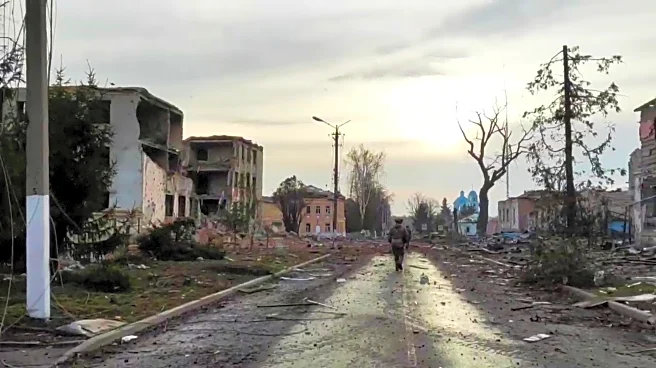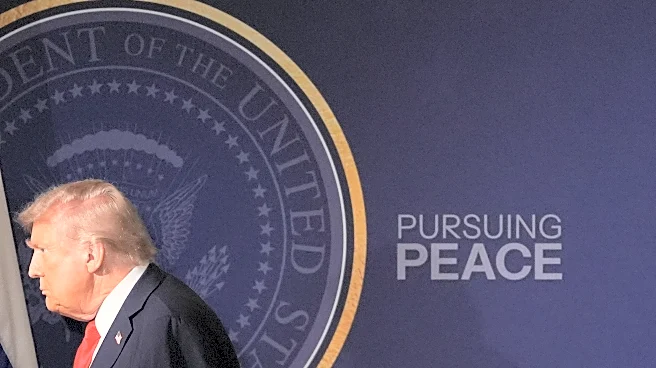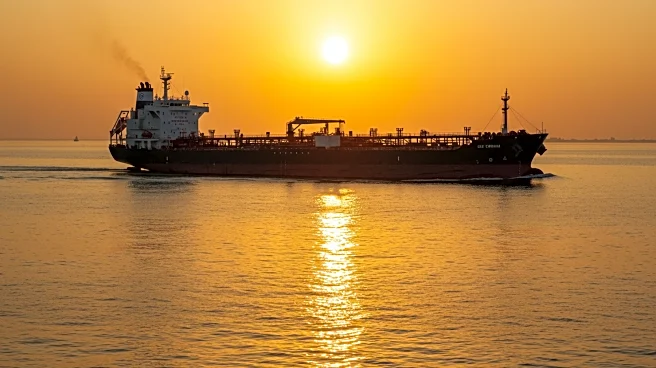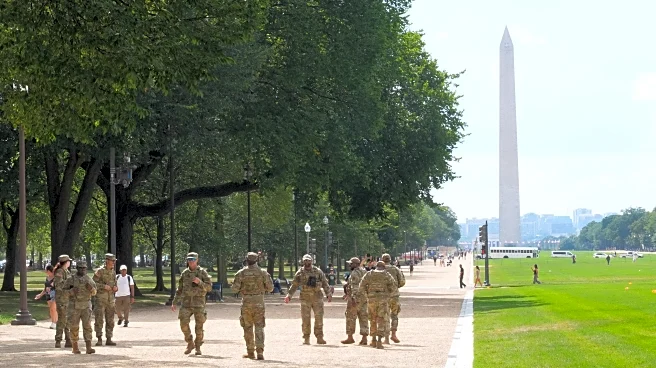What's Happening?
The United States is deploying three Aegis guided-missile destroyers to the coast of Venezuela as part of an initiative to counter threats from Latin American drug cartels. This move aligns with President Trump's strategy to use military force against drug gangs designated as global terrorist organizations. The destroyers, USS Gravely, USS Jason Dunham, and USS Sampson, are part of a broader deployment involving approximately 4,000 sailors and Marines. Additional military assets, including P-8 spy planes, warships, and an attack submarine, will support operations in the southern Caribbean region. The deployment aims to enhance intelligence and surveillance capabilities and potentially serve as a platform for targeted strikes.
Why It's Important?
This military deployment underscores the Trump administration's commitment to addressing drug trafficking and securing the U.S. southern border. By designating drug cartels as terrorist organizations, the administration is intensifying efforts to disrupt their operations and limit migration. The presence of U.S. naval forces in the region could deter cartel activities and strengthen border security measures. However, it may also escalate tensions with Venezuela, whose President Nicolas Maduro has vowed to defend the nation's sovereignty against perceived threats. The deployment reflects broader geopolitical dynamics and the U.S.'s strategic interests in Latin America.
What's Next?
The ongoing military operations in the Caribbean are expected to last several months, with potential adjustments based on intelligence gathered. The U.S. may consider further military actions if deemed necessary to counter cartel activities. Diplomatic interactions with Venezuela and other regional stakeholders will be crucial in managing potential conflicts and ensuring the effectiveness of the deployment. The situation will be closely monitored by international observers, given its implications for regional stability and U.S.-Venezuela relations.













